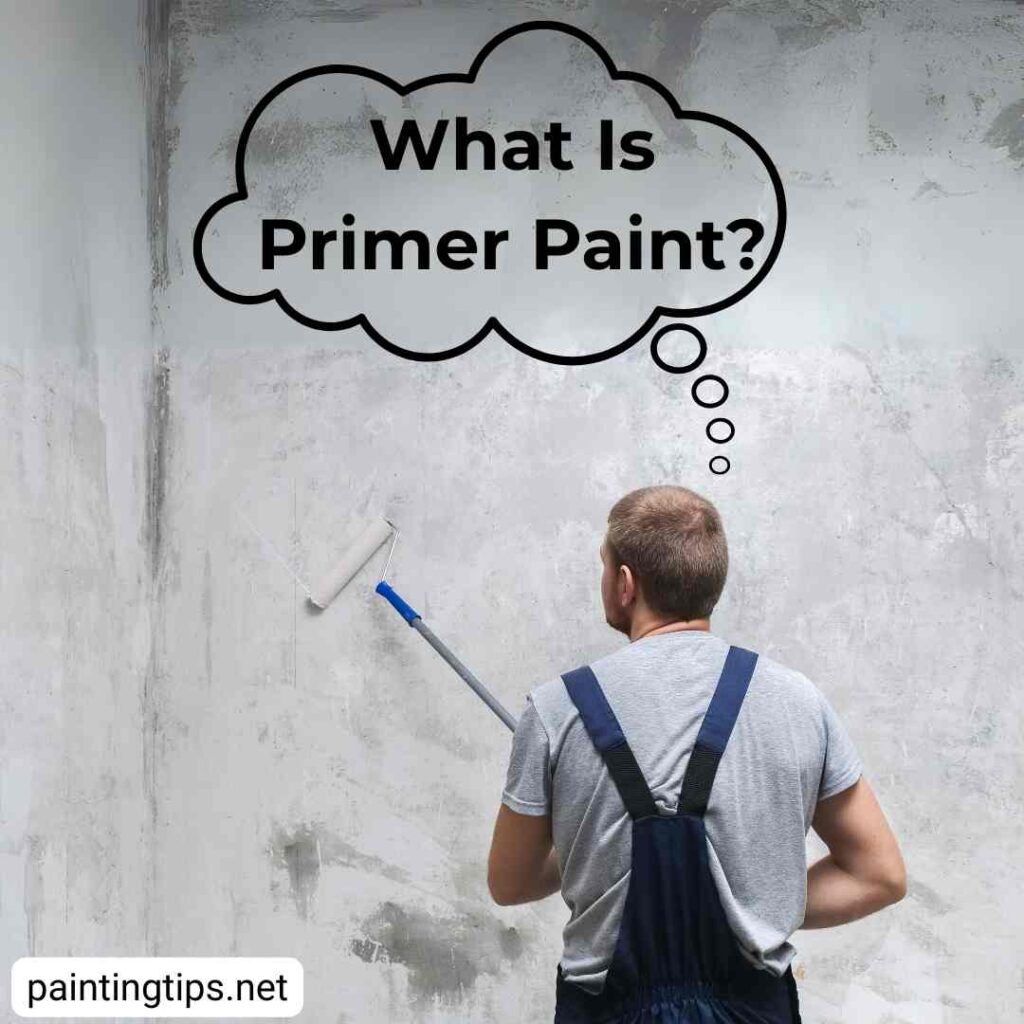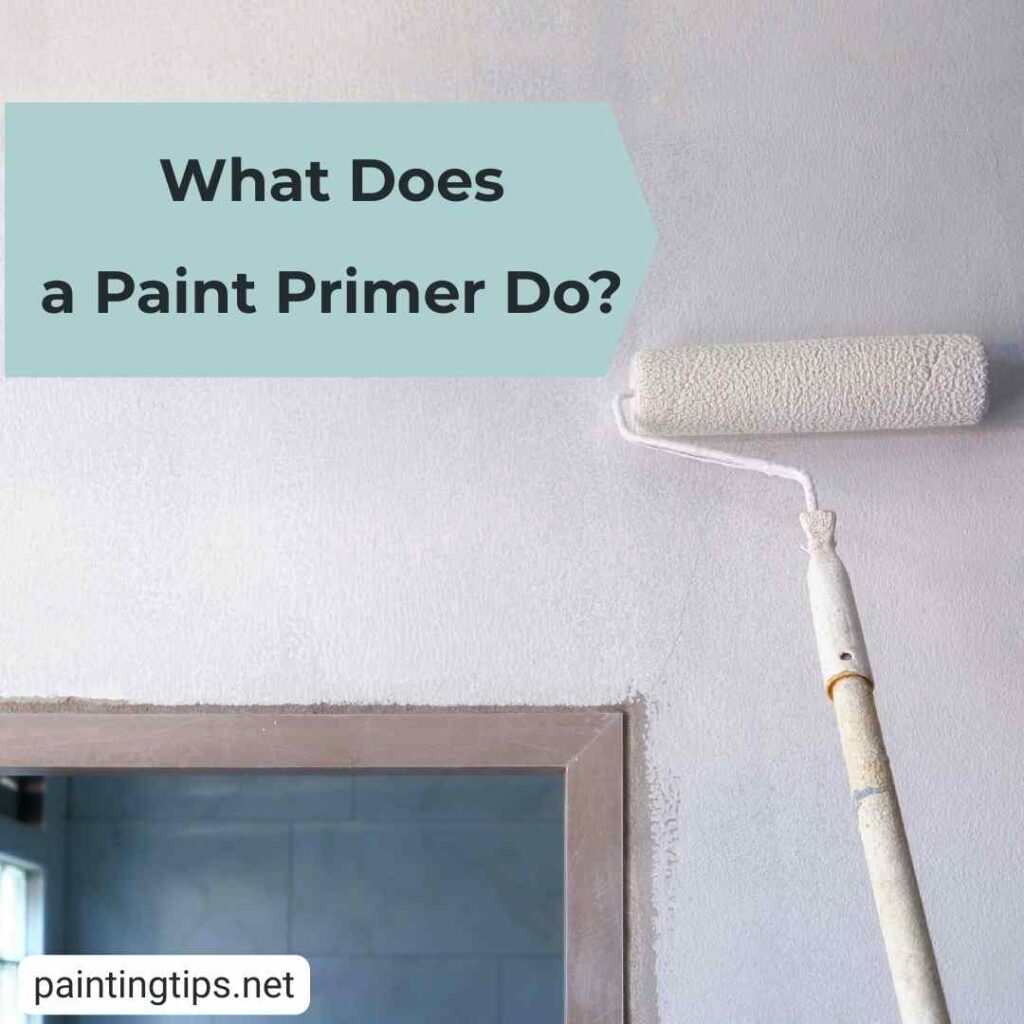Primer paint is one of the most important steps in any painting project, making a big difference in how your paint adheres and lasts. In this guide, we’ll explain what primer is and how it prepares surfaces for a smooth, long-lasting finish. You’ll also learn which types of primers work best for different surfaces, how primer improves paint adhesion and durability, and the key factors to consider when choosing the right primer for your project. By the end, you’ll have all the essential information to ensure your painting results are professional and long-lasting.
What Is Primer Paint?

Simply put, primer is a type of paint used before applying the final color coat. Primer helps prep the surface for paint, much like sanding or cleaning does before the actual painting begins. In fact, priming often allows you to skip or simplify those other steps. A good primer ensures that the paint adheres well to the surface, improving durability and finish.
There are many types of primers available, but before diving into them, let’s go over the key factors to consider when choosing a primer. “You might also like: Do I Need to Use Primer Before Painting?”
Things to Consider When Choosing a Primer:
- Is the surface absorbent or non-absorbent?
- Is there an existing layer of paint, and is it compatible with the new paint?
- Is the surface glossy or slippery?
- Is the surface smooth or rough?
- Is the surface bare or previously painted?
- Are there any cracks, holes, or imperfections on the surface?
What Does a Paint Primer Do?

Now that we’ve covered how to choose a primer, let’s take a closer look at what primer paint actually does and why it’s so important.
- Smooths uneven surfaces: While sanding is typically used to deal with rough surfaces, primer can help even out slightly textured areas, creating a smoother base for painting.
- Seals and protects: Some primers seal surfaces and provide protection from moisture, helping to prevent mold and mildew from forming under the paint.
- Covers patched or repaired areas: Primer evens out color and texture across patched or uneven sections, ensuring a consistent finish with your topcoat.
- Prevents uneven paint absorption: Primer helps paint go on evenly and prevents patchy coverage or streaking.
- Fills small cracks and holes: Some primers can fill in minor imperfections, making the surface smoother before the topcoat.
- Blocks stains and prevents rust: Primers can help prevent water or rust stains from bleeding through the paint.
- Boosts adhesion: Primer bonds well to surfaces and creates a strong base that helps the topcoat adhere better, reducing the risk of peeling or chipping.
- Helps with color transitions: If you’re painting over a dark color with a lighter one, a high-hide primer can save you from needing multiple coats of paint.
- By sealing the surface, primer keeps paint from being absorbed and allows it to sit smoothly and evenly on top.
- Allows painting on glossy or slick surfaces: Most paints don’t adhere well to shiny or non-porous surfaces. Primer provides a grippy base layer that makes painting over these surfaces possible.
- Acts as a bridge between different paint types: If you’re switching between oil-based and water-based paints, primer helps the new coat stick properly to the old one.
Types of Primer Paint
There are several types of primers, each designed for specific surfaces and conditions. Here are some of the most common types of primer and how they’re used in different painting projects:
1-Oil-Based Primer
Great for most surfaces including wood, metal, and previously painted areas. It’s especially effective on stained or weathered surfaces. If you’re using an oil-based primer, follow up with an oil-based paint for best results.
2-Latex Primer (Water-Based)
Best for drywall, plaster, concrete, and other porous surfaces. It dries fast, produces minimal odor, and can be cleaned up easily with soap and water. Ideal when using water-based paints.
3-Epoxy Primer
Used before applying epoxy paints. It’s perfect for high-traffic areas like garage floors or industrial surfaces where durability is key.
4-Acrylic Primer
Commonly used in hobby and craft projects. It’s a water-based primer that enhances paint adhesion, helps cover old colors, and works well on bare or absorbent surfaces like wood.
5-Transition or Conversion Primer
Useful when switching from oil-based to water-based paints. It allows water-based paint to adhere to glossy, oil-based surfaces and also helps in covering dark colors.
6-Stain-Blocking Primer
Designed to hide stains and cover dark paint when transitioning to a lighter color. Helps create a clean, uniform base.
7-Bonding Primer
Specially formulated for glossy, slick, or non-porous surfaces. It can even allow for the application of cement-based adhesives.
8-Drywall or Plaster Primer
Used on new drywall, plaster, or unpainted porous surfaces. It seals the surface to prevent over-absorption and helps paint stick better.
9-Lacquer Primer (Cellulose-Based Primer)
Should only be used on raw wood or surfaces previously coated with lacquer. It’s not suitable for use over water-based or oil-based finishes, as it may cause bubbling or peeling.
10-Spray Primers and Specialty Primers
Spray primers are ideal for quick applications and smaller projects, especially when using spray paint. Specialty primers are designed for use with effect paints and must be used according to manufacturer instructions.
What Paint Primer Should I Use?
- Always match your primer type to your paint type (water-based with water-based, oil-based with oil-based).
- For slick, glossy, or non-absorbent surfaces, use a bonding or transition primer.
- If you’re changing the wall color significantly, go for a stain-blocking or latex primer.
- For metal surfaces, choose an oil-based or lacquer primer.
- For outdoor or rough surfaces, exterior-grade primers with filling properties are ideal. “Related post: How much primer paint do i need?”
Frequently Asked Questions
What is Primer Paint Used for?
Primer paint is used to prepare surfaces for painting by improving paint adhesion, covering imperfections, sealing porous areas, and helping paint last longer.
Is Primer Just White Paint?
No, primer is not just white paint. It’s a base coat designed to seal surfaces, improve paint adhesion, and create a smooth, even finish before painting.
Can I use Normal Paint as a Primer?
Using normal paint as a primer isn’t recommended, as it lacks the sealing and adhesion qualities of a true primer. However, in some cases, paint thinned by 15% can be used like a primer on less demanding surfaces.
Is it OK to Use White Primer for Black Paint?
You can use white primer under black paint, but a gray or tinted primer is often better. It provides better coverage and helps the black paint look richer and more even.
Is Primer Paint Waterproof?
Primer paint is not completely waterproof, but some types help protect surfaces from moisture and prevent damage like mold and mildew when used properly.